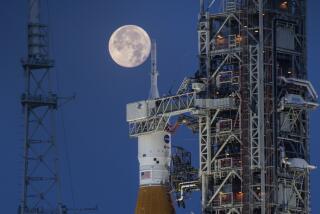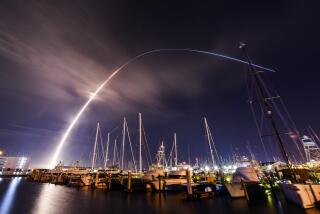Robots, Move Over
- Share via
Astronauts have been the stars of humankind’s forays into space. When Russian Yuri Gagarin was hurled into Earth orbit in 1961 and Alan Shepard became the first American in space less than a month later, the men were hailed, not the rockets. Neil Armstrong’s “one small step” onto moon dust in 1969 opened near-infinite hopes and possibilities.
In recent years, however, budget-strapped NASA has come to choose cheaper and safer robot-based missions for space explorations. That’s why the space agency decided last month to replace the manned space shuttle program with a new robot-controlled spaceship, most likely Lockheed-Martin’s Venture Star.
But hopes that humans may have a continuing role in space were revived this week by the announcement that ice may have been discovered on the moon in a crater. Scientists are stressing that the finding is tentative and the evidence is not conclusive.
Any water, if it could be tapped, might provide a crucial boost to a manned moon base, along with previously discovered lunar oxygen, hydrogen and metals. Water, if indeed it is there, could lead to an astronomical observatory infinitely superior to the Hubble Space Telescope. And rockets launched from the moon into deep space would be a bargain compared to Earth launchings, in which 90% of the cost goes to breaking free of Earth’s gravity.
Currently, less than a penny of each U.S. tax dollar goes to the space program, enough to support only the bargain-basement robotic missions now planned by NASA. A moon base would be high-priced but, to paraphrase Armstrong, still another giant leap for mankind.






